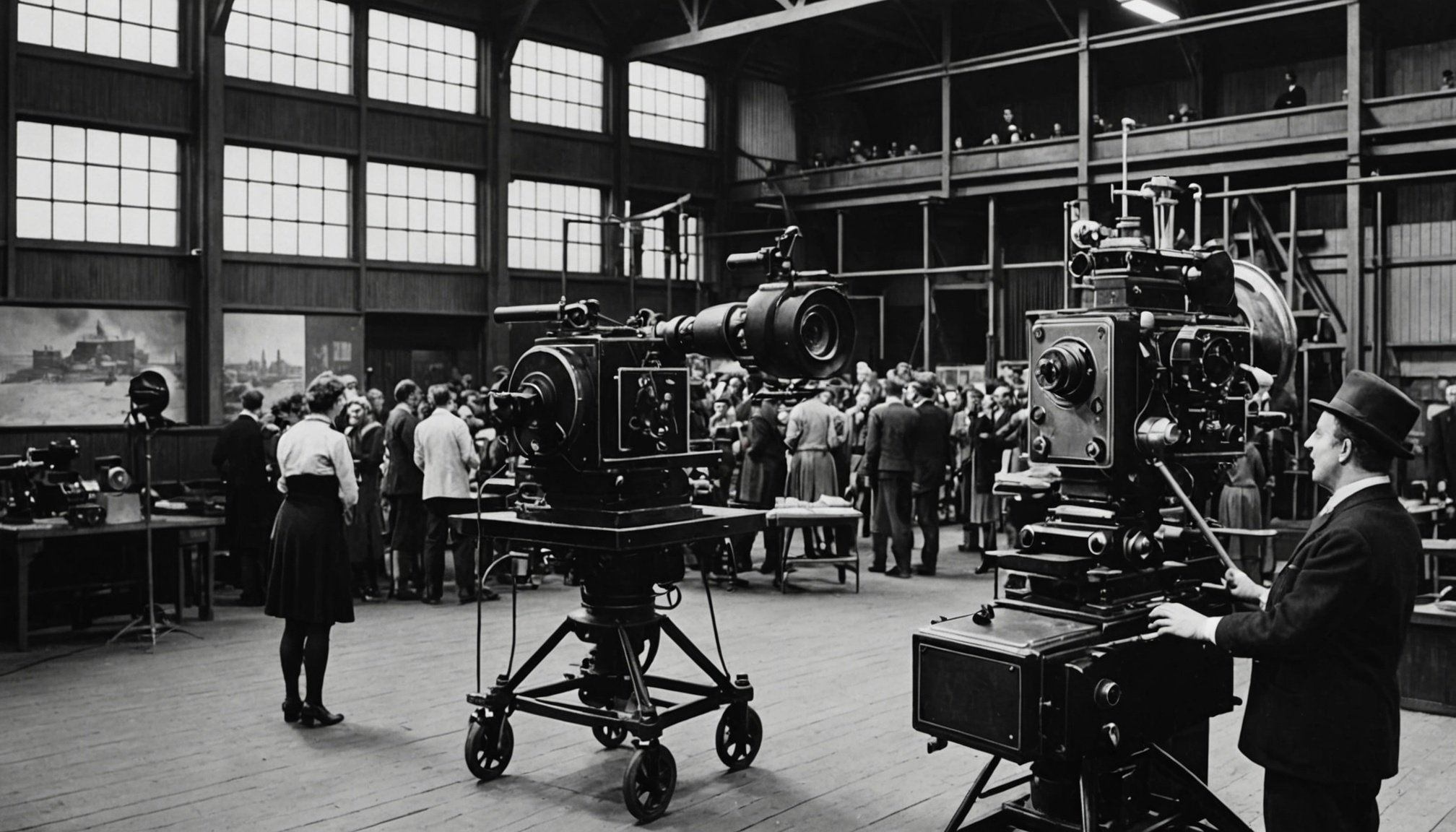Overview of British Cinema History
British cinema history is rich and diverse, marked by numerous key milestones that have shaped the landscape of global filmmaking. As early as the 1890s, British inventors and entrepreneurs played a pivotal role in pioneering film technology and production techniques. This foundational work established a strong tradition of innovation within the industry.
Influential film studios such as Ealing Studios and Pinewood Studios have significantly impacted the industry. Ealing Studios, known for its iconic comedies in the 1940s and 1950s, embodied British wit and storytelling prowess. Pinewood, on the other hand, became synonymous with large-scale productions, including the James Bond series, thus bolstering the global presence of British cinema.
Also to discover : Step Back in Time: Enjoy an Authentic Medieval Feast at a Historic English Castle!
An overview of notable British films highlights the diversity and creativity inherent in the industry’s history. From Alfred Hitchcock’s suspenseful tales like “Psycho” to modern masterpieces such as “The King’s Speech,” British films have consistently earned critical acclaim. Filmmakers such as David Lean and Ken Loach have left an indelible mark, embodying the artistic ambition and social consciousness that characterise much of British cinema.
The historical significance of British cinema lies in its ongoing influence, with homegrown talent continuing to propel the industry forward. From its early innovations to contemporary highlights, British cinema remains a cornerstone of film history.
Additional reading : Living as a nomad: discover your ideal remote workspace
Notable British Film Studios
In the realm of British film production, several studios have carved out a significant presence, shaping the cinema landscape with their distinctive contributions. These notable film studios not only produce iconic films, but they also influence the global film industry.
Pinewood Studios
Pinewood Studios, perhaps the most renowned of British film studios, has played a critical role in the history of cinema. Established in 1935, Pinewood’s historical journey has been marked by its contributions to numerous iconic films, including the legendary “James Bond” series and the “Star Wars” franchise. These films not only highlight the studio’s importance but also showcase its commitment to advancing cinematic artistry. Today, Pinewood continues its tradition of excellence with state-of-the-art facilities that host both blockbuster projects and independent features, affirming its place as a leader in current film production activities.
Shepperton Studios
With a legacy steeped in rich filmmaking history, Shepperton Studios stands as a beacon of British cinema. Known for innovation, Shepperton has been the birthplace of many notable projects like “Gladiator” and “The Martian.” Today, Shepperton offers engaging visitor experiences with studio tours that invite film enthusiasts to peek behind the curtain of movie magic, fostering a deeper connection with the art of filmmaking.
Ealing Studios
Synonymous with comedy, Ealing Studios has a storied past dating back to the early 20th century. Its contributions to British film, particularly in the comedy genre, cannot be overstated. Classics like “The Lavender Hill Mob” have left a lasting cultural impact. Visitors can explore Ealing’s legacy through guided tours, offering an insightful glimpse into its comedic contributions and historical significance.
The Importance of Film Heritage
Film heritage holds profound cultural significance as it encapsulates unique narratives, styles, and societal reflections from various eras. The role of film heritage in defining cultural identity cannot be overstated, as these cinematic artifacts serve as a window into past communities and values, shaping national and even personal identities.
Preservation is crucial to ensure these films remain accessible for future generations. Film studios engage in various preservation efforts and initiatives to protect these irreplaceable treasures from deterioration due to age, chemical instability, or neglect. This includes converting analogue films to digital formats, ensuring the longevity of these works and allowing broader access.
Several case studies highlight successful film heritage projects. For instance, the British Film Institute has undertaken significant efforts to restore classics, allowing audiences to experience them in high quality. Meanwhile, the Library of Congress regularly updates its National Film Registry, ensuring crucial works are preserved and recognized for their contribution to film heritage.
These initiatives not only safeguard the films themselves but also foster an appreciation for the historical contexts they represent. In turn, this appreciation strengthens cultural ties and emphasizes the vital role cinema plays in recording and reflecting societal narratives, preserving the collective memory for posterity.
Guided Tours of Film Studios
Embarking on a film studio tour offers fascinating insights into the cinematic world. These tours are designed to provide unique visitor experiences, catering to various interests and preferences.
Overview of Tour Options
Tours vary widely: from group tours, ideal for those seeking a collective experience, to private tours, perfect for an intimate journey through the studio. The average duration is about two hours, costing approximately £25 to £50 per person. For accessibility, most studios offer wheelchair-friendly paths and arrangements for people with special needs.
What to Expect on a Guided Tour
Participants gain a unique peek behind the scenes, exploring the filmmaking process during their tours. Often, highlights include walking through sets, examining sophisticated equipment, and discovering how movie magic comes alive. Some tours even offer opportunities to meet industry professionals, providing firsthand insights into the film industry. Expect to see meticulously crafted studio sets and the advanced technology crucial for producing blockbusters.
Personal Experiences and Anecdotes
Visitors frequently share vivid anecdotes, emphasizing the emotional and nostalgic pull of these tours. Quotes from both visitors and filmmakers underscore the significance of these experiences. For example, one guest might recount the thrill of stepping onto a heritage site set from their favourite film, while another cherishes a serendipitous encounter with a beloved director.
Engaging Visuals and Multimedia
Incorporating film photography and studio visuals significantly enhances the visitor experience by bringing stories to life through vivid images. Films and historical images used during tours can illustrate the times and lives of the subjects in ways that are engaging and memorable. By showcasing these visuals, tours transition from mere narratives to captivating multimedia storytelling experiences.
The inclusion of documentaries and videos plays a pivotal role in deepening visitor understanding. These visual aids provide context and allow viewers to connect emotionally with the subject matter. Typically, a well-produced documentary can offer nuanced perspectives that would be challenging to convey with text alone. This ensures that all aspects of the subject are explored, which enriches the overall experience.
For visitors eager to dive deeper post-tour, recommending related media is essential. Suggested materials might include films that expand on topics covered, photographic collections, and insightful articles that offer additional context. By actively encouraging further exploration, visitors can continue their journey and appreciate the subject matter fully. Consider exploring diverse film photography collections or influential documentaries that align with the themes discussed during the tour. These resources serve to connect and engage audiences long after their initial visit, fostering an enduring intellectual curiosity.











